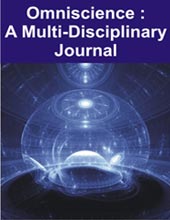[{“box”:0,”content”:”[if 992 equals=”Open Access”]
Open Access
n
[/if 992]n
n
n
n
n
- n t

n
Parbat Amrabhai Chavda
[/foreach]
n
n
n[if 2099 not_equal=”Yes”]n
- [foreach 286] [if 1175 not_equal=””]n t
- Assistant Professor, Department of English Smt R. P. Bhalodia Mahila Arts, Commerce, Upleta, Rajkot, Gujarat, India
n[/if 1175][/foreach]
[/if 2099][if 2099 equals=”Yes”][/if 2099]nn
Abstract
nThis research paper explores the potential of eco-friendly methods in publishing and literature distribution, focusing on their usefulness and future impact, particularly in India. This paper aims to explore the potential impact and usefulness of eco-friendly methods in publishing and literature distribution, shedding light on the latest technologies and methods that can contribute to a greener future. In recent years, there has been a growing concern about the environmental impact of traditional publishing practices. The excessive use of paper, energy consumption, and carbon emissions associated with the production and distribution of literature has raised questions about the sustainability of the industry. As a result, there is a pressing need to adopt eco-friendly methods that can mitigate these environmental concerns. This research paper discusses the benefits and challenges of eco-friendly publishing, emphasizing the potential to revolutionize the way literature is produced, distributed, and consumed.
By analyzing the latest methods and technologies, it explores how these practices can contribute to a more sustainable future. For instance, the paper explores the use of digital platforms, such as e-books and online publishing, as a means to reduce paper consumption and carbon emissions. Additionally, it examines the role of print-on-demand technology in minimizing waste and optimizing distribution. Furthermore, the paper highlights the importance of collaboration between publishers, authors, and readers in promoting eco-friendly practices. It emphasizes the need for awareness campaigns and educational initiatives to encourage sustainable choices in the publishing industry. By fostering a collective responsibility towards the environment, the paper argues that the industry can make significant strides towards a greener future.
While the potential benefits of eco-friendly publishing are evident, the paper also acknowledges the challenges that need to be addressed. These challenges include the resistance to change, technological limitations, and the need for infrastructure development. By acknowledging these obstacles, the paper aims to provide a comprehensive understanding of the potential impact of eco-friendly practices in the publishing industry.
n
Keywords: Ecofriendly methods, publishing, literature distribution, sustainability,digital publishing, environment concerns
n[if 424 equals=”Regular Issue”][This article belongs to Omni Science: A Multi-disciplinary Journal(osmj)]
n
n
n
n
n
n
n[if 992 equals=”Open Access”] Full Text PDF Download[else] nvar fieldValue = “[user_role]”;nif (fieldValue == ‘indexingbodies’) {n document.write(‘Full Text PDF‘);n }nelse if (fieldValue == ‘administrator’) { document.write(‘Full Text PDF‘); }nelse if (fieldValue == ‘osmj’) { document.write(‘Full Text PDF‘); }n else { document.write(‘ ‘); }n [/if 992] [if 379 not_equal=””]n
Browse Figures
n
n
n[/if 379]n
References
n[if 1104 equals=””]n
- Done R, Warner R, Noorda R. Publishing Distribution Practices: New Insights About Eco-Friendly Publishing, Sustainable Printing and Returns, and Cost-Effective Delivery in the US. Publishing Research Quarterly. 2022 Jun;38(2):364-81.
- Shaverdi M, Heshmati MR, Eskandaripour E, Tabar AA. Developing sustainable SCM evaluation model using fuzzy AHP in publishing industry. Procedia computer science. 2013 Jan 1;17:340-9.
- Dubini P, Giglia E. Economic Sustainability during transition: the case of scholarly publishing. InELPUB Conference, Milano 2009 Jun.
- Mithun A. IMPACT OF DIGITAL PUBLISHING ON PUBLISHING SECTOR – Aiyappa Mithun – Medium. Medium. Medium; 2023. Available from: https://medium.com/@aiyappa.mithun/impact-of-digital-publishing-on-publishing-sector-4a73d72f3d56#:~:text=Digital%20publishing%20has%20a%20lower,environmental%20awareness%20and%20sustainable%20practices.
- Hasiloglu M, Kaya O. An analysis of price, service and commission rate decisions in online sales made through E-commerce platforms. Computers & Industrial Engineering. 2021 Dec 1;162:107688.
- ANI PR. Sustainable Printing Practices for Indian Corporations: Konica Minolta’s Commitment to SMBs. ThePrint. theprint; 2023. Available from: https://theprint.in/ani-press-releases/sustainable-printing-practices-for-indian-corporations-konica-minoltas-commitment-to-smbs/1763080/
- Bernius S, Hanauske M, König W, Dugall B. Open access models and their implications for the players on the scientific publishing market. Economic analysis & policy. 2009 Mar 1;39(1).
- Masahiro O. Scholarly communications revisited: journal publishing, open access, and digital-age Journals. IDE Discussion Papers. 2018 Apr;715.
- Anderson P. A New Report Evaluates the Indian Publishing Industry’s Prospects. Publishing Perspectives. 2021. Available from: https://publishingperspectives.com/2021/07/a-new-report-evaluates-the-indian-publishing-industrys-prospects/
- Mukherjee B. Scholarly communication in library and information services: the impacts of open access journals and e-journals on a changing scenario. Elsevier; 2010 Jul 27.
nn[/if 1104][if 1104 not_equal=””]n
- [foreach 1102]n t
- [if 1106 equals=””], [/if 1106][if 1106 not_equal=””],[/if 1106]
n[/foreach]
n[/if 1104]
nn
nn[if 1114 equals=”Yes”]n
n[/if 1114]
n
n

n
n
n
n
n
| Volume | ||
| [if 424 equals=”Regular Issue”]Issue[/if 424][if 424 equals=”Special Issue”]Special Issue[/if 424] [if 424 equals=”Conference”][/if 424] | ||
| Received | January 17, 2024 | |
| Accepted | February 10, 2024 | |
| Published | March 15, 2024 |
n
n
n
n
n
nn function myFunction2() {n var x = document.getElementById(“browsefigure”);n if (x.style.display === “block”) {n x.style.display = “none”;n }n else { x.style.display = “Block”; }n }n document.querySelector(“.prevBtn”).addEventListener(“click”, () => {n changeSlides(-1);n });n document.querySelector(“.nextBtn”).addEventListener(“click”, () => {n changeSlides(1);n });n var slideIndex = 1;n showSlides(slideIndex);n function changeSlides(n) {n showSlides((slideIndex += n));n }n function currentSlide(n) {n showSlides((slideIndex = n));n }n function showSlides(n) {n var i;n var slides = document.getElementsByClassName(“Slide”);n var dots = document.getElementsByClassName(“Navdot”);n if (n > slides.length) { slideIndex = 1; }n if (n (item.style.display = “none”));n Array.from(dots).forEach(n item => (item.className = item.className.replace(” selected”, “”))n );n slides[slideIndex – 1].style.display = “block”;n dots[slideIndex – 1].className += ” selected”;n }n”}]

